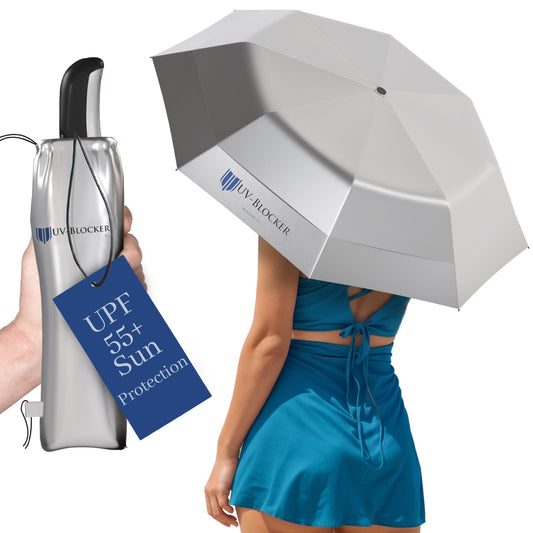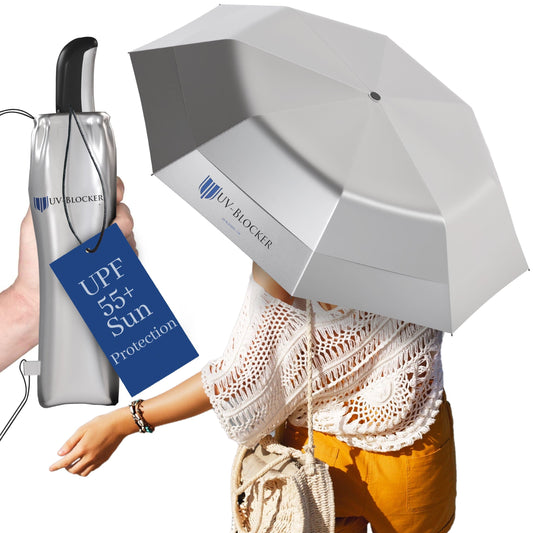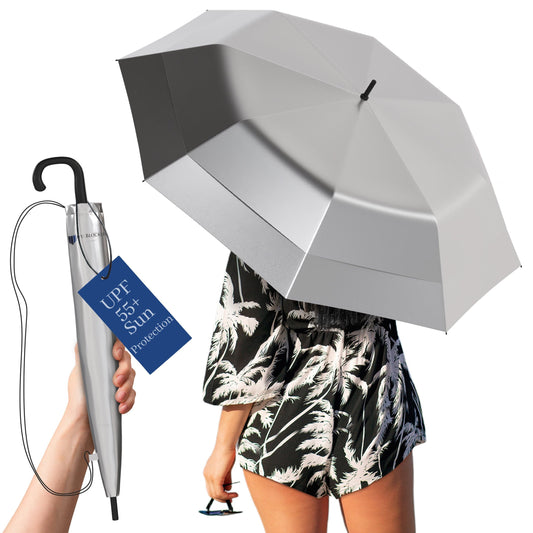Nothing kills a relaxing beach day faster than chasing after a runaway umbrella. One minute you’re sitting in the shade, the next, your umbrella flies halfway down the shore. Most people have dealt with this at some point, and it can feel like a losing battle against the wind. The good news is there are a few simple changes you can make to keep your UV beach umbrella grounded and working the way it’s supposed to.
Summer winds can sneak up even on calm-looking days. It doesn’t take a storm to send your umbrella tumbling. Planning ahead can save you time and help you avoid those frustrating run-arounds. Whether you’re heading off on vacation or just spending a Sunday by the water, learning how to set up and manage your umbrella can keep you cool and covered all day.
Choose the Right Location
Finding the right spot to plant your UV beach umbrella makes a big difference. Some areas are windier than expected, especially on open stretches of sand. Taking a few extra minutes to look around before setting up can cut down the chances of your umbrella taking off like a kite.
Look for these features to make things easier:
- Natural windbreaks like dunes, bushes, or lifeguard towers
- Picnic areas or coves where wind movement is more controlled
- Damp sand, which packs tighter than dry, loose patches
Open, flat spaces may seem ideal with fewer people around, but they usually collect stronger gusts. They also offer no buffer from shifting winds, which puts your umbrella at higher risk. If possible, settle near dunes or trees. These areas help reduce wind exposure and give the umbrella more support.
It also helps to take a moment to check what the wind is doing before settling in. Face into the breeze and feel whether it’s soft, steady, or pushy. If it's tugging at your towel or flipping pages of your book, it's enough to make a difference. Picking a better spot up front means you’ll spend less time correcting your setup and more time enjoying the day.
Use Proper Anchoring Techniques
After choosing your spot, locking the umbrella in place is the next step. A strong gust can lift even the heaviest umbrellas if they’re not secured the right way. Luckily, there are easy anchoring solutions that don't take up much room and won’t make your setup difficult.
Here are a few anchoring options to consider:
1. Sandbags: Fill canvas-style bags with damp sand and place them around the umbrella’s base.
2. Weights: Lightweight, portable umbrella weights can slide onto the center pole and keep it grounded.
3. Spiral stakes: These twist into the sand and tighten around the pole, keeping it firmly in place.
No matter which method you choose, always angle your umbrella into the wind and twist it down steadily into the sand. Avoid jamming it straight in—a slow turning motion digs in better and makes the base more secure. If your umbrella frame has built-in hooks or support arms, you can use them to tie down extra weights or connect cords for extra hold.
We heard from a family who set up their umbrella too close to a busy volleyball court. Between jumping players and the steady breeze, dry sand flew around all day. Their umbrella drifted off more than once. After switching to a spiral stake and adding a few heavy sandwich coolers near the base, everything stayed secure. Small tweaks like that can really make a difference.
Optimize Umbrella Setup
Now that your UV beach umbrella is anchored, it's time to focus on how it’s positioned. An improperly angled umbrella or one set too high can catch the wind in the wrong way, making it more likely to tip or fold. Positioning affects both your shade and your safety throughout the day.
Follow these tips to get it just right:
- Tilt the canopy so it leans into the wind. This shifts gusts upward, keeping the umbrella from turning into a sail.
- Lower the height of the umbrella when the wind picks up or if you’re leaving it unattended for a while.
- Avoid opening the canopy to full extension on breezy days. Less exposed surface means the umbrella catches less wind.
- Keep your beach bags, coolers, and chairs close to the base. They can work as extra weight and help prevent movement.
Sometimes you can feel the difference right after making a small change. If the umbrella sway less, great. If you hear creaking or see it moving, it needs another adjustment. Don’t wait until a gust proves it.
As the hours pass, the wind may shift or the sun might move, so it’s a good idea to reposition your umbrella now and then. A quick readjustment can make everything feel like new again. These little changes help you avoid trouble and let the day go smoother.
Check and Maintain Your Umbrella
You wouldn’t drive a car without glancing at the tires now and then. A UV beach umbrella works the same way. Before and after each beach trip, make sure it’s still solid. A lot of umbrellas tip or fold not because the wind is strong, but because something on the umbrella was already weak.
Here are a few things to check before packing up:
- Check the pole and ribs for bending, rust, or cracks
- Open and close the canopy to make sure there are no sticky parts or weak hinges
- Look for thin spots, small rips, or holes in the fabric that could get worse when stretched
- Make sure any hooks, ties, and screw mechanisms still feel tight
Doing these quick checks at home is easier than finding out something is off once you’re already at the beach. One beach regular told us their umbrella gave out during a typical breezy day. It turns out the joint on the tilt arm had loosened over time. If they’d spotted it earlier, they might’ve saved their snacks—and avoided asking the neighbor to help retrieve the flying umbrella across the sand.
It’s also smart to dry off the umbrella before closing it up and storing it. Damp fabric wears out faster, especially with regular salt and sun exposure. You’ll get more summers out of it with just a few minutes of care after each trip.
Enjoy Beach Days Without Worries
No one goes to the beach to babysit an umbrella. It should work the way you need it to—giving you cool shade while you relax with a book or snack, not making you get up every few minutes to fix it.
Wind is part of beach life, but with some planning, it doesn’t have to ruin your setup. Pick a smart location, anchor your umbrella right, adjust it as needed, and check it often. All these pieces come together to make your day smoother, safer, and a lot more fun.
Once you get a feel for your setup habits, you’ll spend far less time fiddling with your umbrella. Your UV beach umbrella can become a solid part of every trip, holding strong and giving you shade that stays put. With a few smart habits, you’ll stay shaded, sun-safe, and able to enjoy the sand without any drama.
As you get ready for your next day by the water, make sure your shade stays right where you need it. A reliable UV beach umbrella from UV-Blocker makes it easier to relax without worrying about shifting winds or sun exposure. Count on us to help you enjoy every moment under dependable protection and cool, consistent shade.








